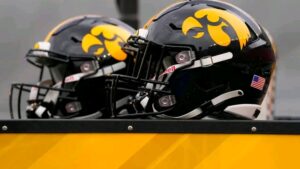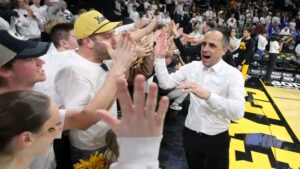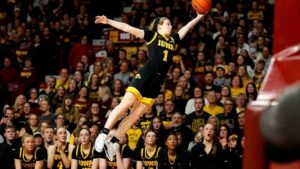
GLENDALE, Ariz. — With the Patriots trailing 16-3 in the third quarter at State Farm Stadium, it seemed they had finally found the spark needed to get back into the game.
Kyler Murray, under pressure, made a poor decision and threw the ball into Jonathan Jones’ hands. It appeared to be an interception that would place New England’s offense at the Cardinals’ 18-yard line, but Anfernee Jennings was flagged for roughing the passer.
As Murray approached the line of scrimmage, Jennings had already committed to the hit, and the quarterback ducked into a glancing blow. The penalty negated the interception, but it seemed Jennings couldn’t have avoided the contact. After Arizona’s 30-17 win, referee Ron Torbert defended his crew’s decision to throw the flag and explained their reasoning.

Here’s the full pool report conducted with PFWA representative Mike Reiss:
Question: What did you see on the field that led to the roughing the passer penalty (third quarter, 3rd-and-6, Arizona 8-yard line)?
Torbert: “The flag came from the umpire’s position. The umpire saw a hit to the quarterback’s helmet just after he released the ball.”
Question: How does a quarterback scrambling as a runner before throwing the ball affect the protection under the roughing the passer rule?
Torbert: “It doesn’t change the protection he gets from forcible hits to the helmet. Even though he’s scrambling and moving around, he still receives the same protection from hits to the helmet as he would if he were in the pocket.”
Question: If the quarterback lowers his head after releasing the ball, before contact is made, how does that affect his protection under the roughing the passer rule?
Torbert: “By rule, that action does not alter the protection he receives from forcible hits to the helmet. We would need to observe the action if it happens, but it does not change the protection from violent helmet hits.”
Question: For a defensive player asking what he must do to avoid a penalty in this situation, is the answer simply that no forcible contact with the helmet can occur?
Torbert: “In this particular situation, yes, that would be the answer. The penalty was called due to forcible contact to the quarterback’s head and neck area.”





